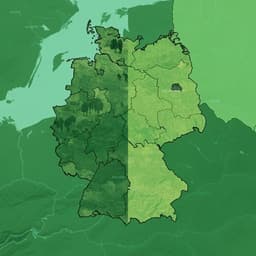Introduction
Debris flows, rapid mass movements of sediment and water, pose significant hazards in mountainous regions. A warming climate is expected to alter debris-flow activity, primarily through increased precipitation intensity and changes in sediment supply from sources like glacier retreat and permafrost thaw. However, assessing these impacts is challenging due to the scarcity of long-term, systematic debris-flow records. Most existing studies focus on transport-limited catchments, where sediment supply is abundant, showing varied results regarding the influence of climate change. This study addresses these knowledge gaps by investigating a supply-limited catchment in the Eastern Swiss Alps, the Multetta fan, where sediment availability is a major constraint on debris-flow occurrence. The Multetta fan, characterized by steep slopes and limited sediment sources, provides a unique opportunity to examine the influence of sediment supply on debris-flow activity and decouple its relationship with climatic influences. Understanding the behavior of supply-limited systems is crucial for accurate hazard assessment and risk mitigation in a changing climate, as these systems may respond differently to climate change than their transport-limited counterparts.
Literature Review
Existing research on debris flows and their response to climate change primarily focuses on transport-limited catchments. Studies in these systems often report increased frequency and magnitude of debris flows due to more intense rainfall events, glacier retreat, rock-glacier acceleration, and permafrost degradation, leading to increased sediment availability. However, results are not always consistent, with some studies finding no clear trends or even decreased activity. This inconsistency is attributed to complex interactions between debris-flow triggering, sediment availability, geomorphic connectivity, and climate, along with limitations in the available datasets. These datasets often suffer from non-uniform observation rates and biases towards recent and larger, damaging events, hindering the accurate assessment of long-term trends and the attribution of climatic drivers. The lack of long-term, high-quality data from supply-limited catchments represents a significant gap in understanding the overall impact of climate change on debris-flow activity.
Methodology
This study utilizes dendrogeomorphic techniques to reconstruct a long-term record of debris-flow activity at the Multetta fan. A dense stand of old-growth Swiss mountain pine (*Pinus mugo* ssp. *rotundata*) trees, frequently impacted by debris flows, provides a unique archive of past events. 478 trees were sampled across four transects on the main fan. Tree-ring analysis focused on identifying growth disturbances (GDs), including growth reductions, callus tissue formation, and compression wood, which are indicative of debris-flow impact. The age and position of GDs allowed for retrospective dating of debris-flow events with annual precision. A completeness analysis was performed to assess the reliability of the data over time using negative binomial and nonparametric change-point analyses. The spatial extent of past debris-flow events was determined by dividing the fan into sixteen zones based on topographic features and the distribution of damaged trees. Event magnitude was classified based on the percentage of the fan affected (XS, S, M, L, XL, XXL). To analyze trends in debris-flow activity, nonparametric Mann–Kendall, Wald–Wolowitz, and Theil–Sen slope tests were used on the reconstructed time series. Finally, the recurrence intervals and repose-time patterns of debris-flow events were analyzed and modeled using exponential, Weibull, and log-logistic distributions to characterize the system’s behavior and to assess whether it is supply- or transport-limited. Geomorphic mapping using orthoimages and LiDAR data was also conducted to determine the sediment supply characteristics of the Multetta catchment, confirming its supply-limited nature.
Key Findings
The dendrogeomorphic analysis yielded a 395-year record of debris-flow activity at Multetta (1626–2020). The analysis revealed a long-term average occurrence of 0.16–0.2 debris flows per year, with decadal fluctuations in activity. Importantly, however, statistical trend tests (Mann-Kendall, Wald-Wolfowitz, and Theil-Sen) showed no significant long-term trend in debris-flow frequency or magnitude. This lack of a trend was observed despite significant local warming (exceeding 2 °C since the late 19th century) and known decadal-scale climate variability, including periods within the Little Ice Age. The analysis of repose times indicated that the Weibull distribution best fitted the data, suggesting regular repose time patterns indicative of a supply-limited system. This regular recurrence reflects the time needed for sediment to accumulate and reach a critical threshold for debris-flow initiation. Spatial analysis revealed that major debris flows (XXL) caused significant changes in fan morphology and shifted debris-flow activity to different parts of the fan. Despite the shifts in activity, the overall frequency remained relatively consistent. The absence of large debris flows since 1990 is noteworthy. The comparison with a transport-limited catchment (Ritigraben) further highlighted the contrasting behavior between supply-limited and transport-limited systems. In the Ritigraben, which is abundant in sediment, changes in the frequency and magnitude of debris flows correlated with increased summer precipitation after the Little Ice Age. The absence of similar trends at Multetta strongly suggests that the sediment supply controls debris-flow activity.
Discussion
The findings of this study demonstrate a clear decoupling of climate change effects on debris-flow activity in a supply-limited catchment. In contrast to transport-limited systems where sediment supply is abundant, the Multetta fan exhibits a strong dependence on sediment availability, leading to regular repose time patterns and a lack of significant response to climate warming. This highlights the importance of considering catchment sediment supply characteristics when assessing debris-flow hazard and designing risk mitigation strategies. The results emphasize that a one-size-fits-all approach to climate change impacts on debris flows is inappropriate. Future research needs to focus on improved characterization of sediment supply in diverse catchment settings to refine predictive models and ensure effective hazard management.
Conclusion
This study provides the longest continuous reconstruction of debris-flow activity in the Eastern Swiss Alps, demonstrating that a supply-limited catchment shows no significant change in debris-flow frequency or magnitude despite substantial climate warming. The regular recurrence of debris flows, reflecting sediment supply limitations, contrasts with findings from transport-limited systems. This underscores the critical role of sediment availability in controlling debris-flow activity and implies that climate-change adaptation strategies should be tailored to the specific characteristics of individual catchments.
Limitations
The study's reliance on tree-ring data might lead to underestimation of smaller debris-flow events that do not cause significant growth disturbances in trees. Furthermore, the reconstruction is limited to the area covered by the *Pinus mugo* forest stand; hence, it does not encompass the full extent of potential debris-flow activity on the Multetta fan. The assumption that all trees affected in a given year were impacted by a single event might introduce some uncertainty, particularly for years with multiple smaller events. Nevertheless, the application of various statistical tests and the comparison with a transport-limited catchment significantly strengthen the conclusions.
Related Publications
Explore these studies to deepen your understanding of the subject.







